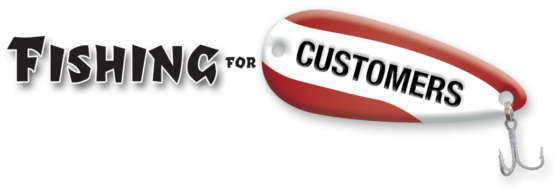“Everyone needs our product,” said Bob. “All we need to do is to tell them about it.”
Bob’s enthusiasm is contagious. He’s convinced that America’s tap water isn’t safe to drink because of the presence of pollutants. The water filter he sells removes minerals, microorganisms, toxic metals, and organic chemicals.
If sales is truly a transfer of confidence from the seller to the buyer, Bob is going to sell a lot of water filters. Assuming, of course, he can get his message to enough people.
He thinks advertising problems in the water supply is an excellent way to attract potential customers to his business.
He’s wrong.
Bob has two problems. Each will affect his marketing strategy. Can you identify them?
First, he offers a solution to people who don’t recognize that they have a problem. They will naturally be skeptical.
Second, as small as his industry is, he has competitors. That means if he chooses to educate potential customers about the need for water filtration, they may well buy filters from some other company.
Bob is not alone with this “Teach them why they need it” vs “Ask them to choose mine” dilemma.
A manufacturer can’t sell his brand of coffee to people who don’t drink coffee. First, those people must choose coffee as their beverage. Only then can the manufacturer persuade them to choose his brand instead of another. The provider of high-speed Internet can’t sell connections to households without computers. First, the family must choose to purchase a computer. Secondly they must elect to be connected to the Internet. Only then can the provider convince that family to select his service over that of a competitor.
And Bob can’t sell his brand of water filters to consumers who find the quality of their tap water to be quite acceptable.
Why Shouldn’t Bob’s ads explain and educate?
Because even the most effective marketing message can only advance the decision making process by a single step at a time, and there are too many steps between “Have you ever wondered what’s in your drinking water?” and “Will you buy my filter today?”
Convincing people they have a problem is tough enough. Persuasion becomes even more difficult when they know you benefit from the sale.
“You have a problem that you’re not aware of. Really, you do. And I’m here to help. Just buy my product…”
Selling to an existing need may eliminate the credibility issue, but it doesn’t eliminate those additional steps.
Consider the local automobile dealer who no longer needs to convince people cars are superior to horses or bicycles. He still has three decisions standing between each prospect and each sale.
- First, the prospect must decide she needs a car.
- Then she needs to select a brand.
- Finally she has to choose a dealership.
Advertising can advance the process by only a single decision at a time. Which of those choices should the dealer’s advertising try to influence?
Sometimes competitors join forces to inform.
Cooperation can be a smart move when increasing the size of the market benefits all of those who serve that market, even those who compete directly with each other.
The Cattlemen’s Beef Board pools the individual members marketing dollars in the “Beef. It’s what’s for dinner” campaign. The Las Vegas Convention and Visitor’s Authority promotes all hospitality providers in the city with their promise of “What happens in Vegas stays in Vegas.” The Florida Citrus Commission helps to create demand for all Florida growers with, “Florida orange juice. Healthy, pure and simple.”
You may see this cooperation on a local level when the county veterinary association pools dollars to encourage pet vaccinations, or a group of chiropractors each contribute to an educational campaign explaining the benefits of chiropractic treatment.
Short term, with enough concentrated advertising, programs such as this can create a bump in the sales curve. Unfortunately, most co-operative advertising programs don’t have the resources long term to significantly grow the number of buyers.
Which is the smarter strategy?
Convincing people who don’t already feel the need is hugely expensive. More expensive than most small companies can afford. Educating customers is not a cost effective advertising strategy for most small business.
Instead, consider addressing “pre-educated” potential customers – those people who already understand the issue. They will be searching for solutions. They will consider yours.
The car dealer should concentrate on drivers who are already inclined to buy the brand he represents and invite those people to his dealership.
The Internet service provider should address his ads to people actively seeking connectivity, and explain the advantages of his service.
And Bob needs to stop trying to tell everyone about his product. He needs to find people who share his concern for unfiltered tap water. He needs to target those customers with every advertising dollar he invests, and persuade them to purchase their filters from him.
Bob needs to seek out those folks who are already looking for him, but don’t know it yet. Choosing bait for the fish which are biting is efficient fishing for customers.
__________
Part Two of this series will look at the effect brands have on each other when advertising.
In Part Three we’ll consider a multimedia solution for growing the size of the market (and our individual share of it), as well as an exception to the conclusion you just read.
__________
Your Guide,
Chuck McKay
 Your Fishing for Customers guide, Chuck McKay, gets people to buy more of what you sell.
Your Fishing for Customers guide, Chuck McKay, gets people to buy more of what you sell.
Questions about the cost trade-off between educating customers vs targeting those ready to buy may be directed to ChuckMcKay@FishingforCustomers.com. Or call Chuck at 304-208-7654.
___________
This article is one of three on this subject:
Part 1: How Does One Educate a Customer
Part 2: How to Steal Your Competitor’s Customers
Part 3: Zen and the Art of Persuasion
___________



i like this post.
Academic writing